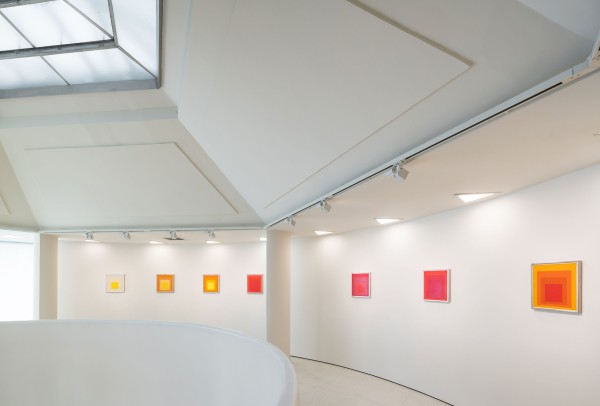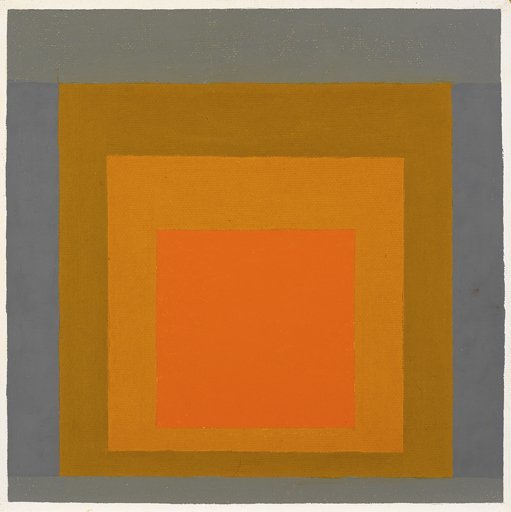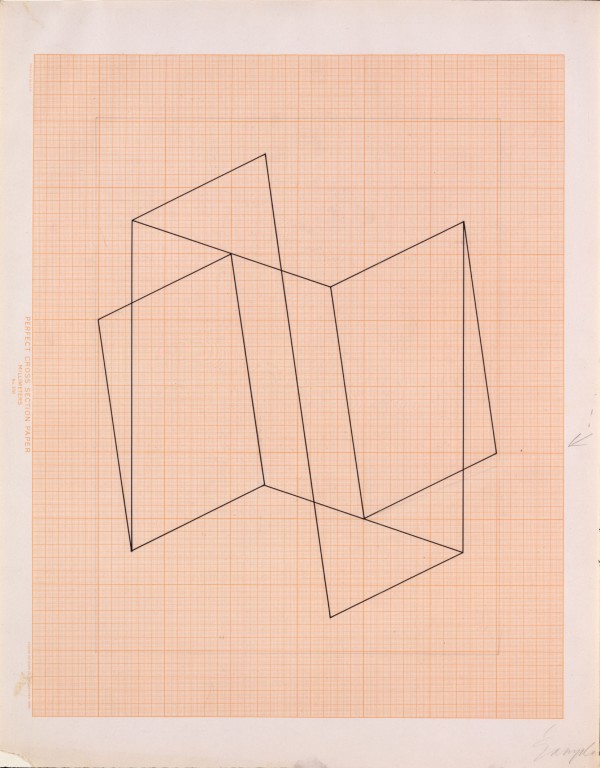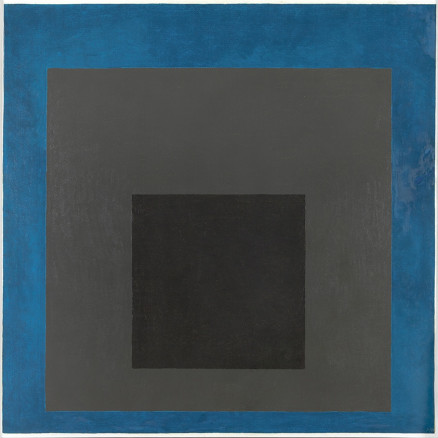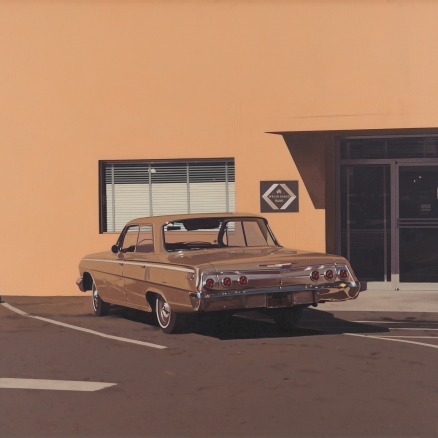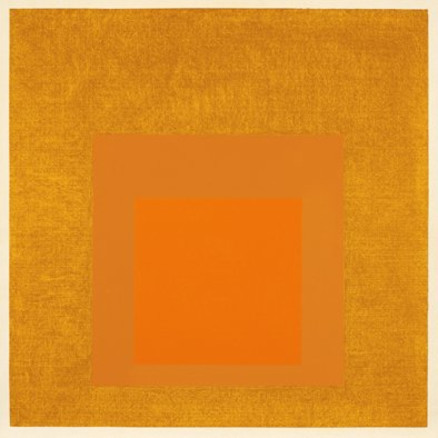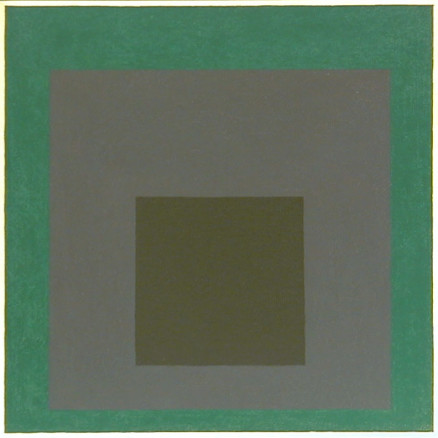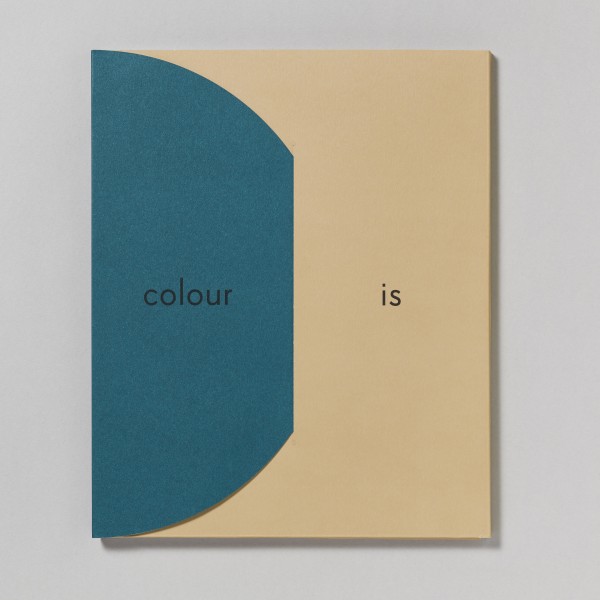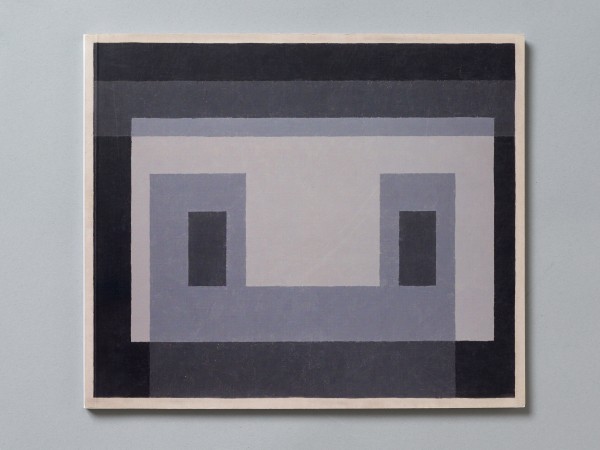Biography
Josef Albers (b. 1888, Bottrop, Germany; d. 1976, Orange, Connecticut), a colour theorist, teacher and painter, was one of the twentieth century’s most influential artists. He studied and taught at the Bauhaus from 1920 until its closure in 1933. After fleeing to America with his wife Anni he taught at Black Mountain College, North Carolina where Robert Rauschenberg and Cy Twombly were among his students. In 1950 Albers was appointed head of the Department of Design at Yale University where he taught Eva Hesse and Richard Anuszkiewicz, among others. The 1963 publication of Albers’ treatise ‘The Interaction of Color’ cemented his enormous influence on post-war art. The Homage to the Square series, executed between 1950 and his death in 1976, consists of nested squares which bring to life the deceptive interplay of colours.
The Josef Albers Foundation was formed in 1963, followed in 1983 by the opening of a museum dedicated to Josef Albers in Bottrop, Germany. The many important exhibitions of Albers’ work include The Responsive Eye at the Museum of Modern Art, New York (1965) and a solo show at the Metropolitan Museum of Art, New York (1971) - the first retrospective the museum had devoted to a living artist. In 1988 the Solomon R. Guggenheim Museum organised a retrospective to mark the centenary of Albers’ birth. A solo exhibition was organised by the Morandi Museum in Bologna (2005) and in 2013 the National Gallery of Umbria in Perugia hosted Josef Albers: Spirituality and Rigor.
Lire plusWorks
-
 Josef Albers, Josef Albers in Mexico, Solomon R Guggenheim Museum, 2018
Josef Albers, Josef Albers in Mexico, Solomon R Guggenheim Museum, 2018
-
 Josef Albers, Homage to the Square, 1961
oil on masonite
16 x 16 in / 40.6 x 40.6 cm
Josef Albers, Homage to the Square, 1961
oil on masonite
16 x 16 in / 40.6 x 40.6 cm
-
 Josef Albers, Structural Constellation (JAAF 1976.3.1534 Structural Constellation), 1955–1958
ink on paper
58.4 x 45.7 cm
%3Cdiv%20class%3D%22artist%22%3E%3Cspan%20class%3D%22artist%22%3E%3Cstrong%3EJosef%20Albers%3C%2Fstrong%3E%3C%2Fspan%3E%3C%2Fdiv%3E%0D%3Cdiv%20class%3D%22title%22%3E%3Cem%3EStructural%20Constellation%20%28JAAF%201976.3.1534%20Structural%20Constellation%29%3C%2Fem%3E%2C%201955%E2%80%931958%3C%2Fdiv%3E%0D%3Cdiv%20class%3D%22medium%22%3Eink%20on%20paper%3C%2Fdiv%3E%0D%3Cdiv%20class%3D%22dimensions%22%3E58.4%20x%2045.7%20cm%3C%2Fdiv%3E
Josef Albers, Structural Constellation (JAAF 1976.3.1534 Structural Constellation), 1955–1958
ink on paper
58.4 x 45.7 cm
%3Cdiv%20class%3D%22artist%22%3E%3Cspan%20class%3D%22artist%22%3E%3Cstrong%3EJosef%20Albers%3C%2Fstrong%3E%3C%2Fspan%3E%3C%2Fdiv%3E%0D%3Cdiv%20class%3D%22title%22%3E%3Cem%3EStructural%20Constellation%20%28JAAF%201976.3.1534%20Structural%20Constellation%29%3C%2Fem%3E%2C%201955%E2%80%931958%3C%2Fdiv%3E%0D%3Cdiv%20class%3D%22medium%22%3Eink%20on%20paper%3C%2Fdiv%3E%0D%3Cdiv%20class%3D%22dimensions%22%3E58.4%20x%2045.7%20cm%3C%2Fdiv%3E -
 Josef Albers, Structural Constellation (JAAF 1954.3.1), 1954
Pen and ink on graph paper
35.6 x 45.7 cm
Josef Albers, Structural Constellation (JAAF 1954.3.1), 1954
Pen and ink on graph paper
35.6 x 45.7 cm






